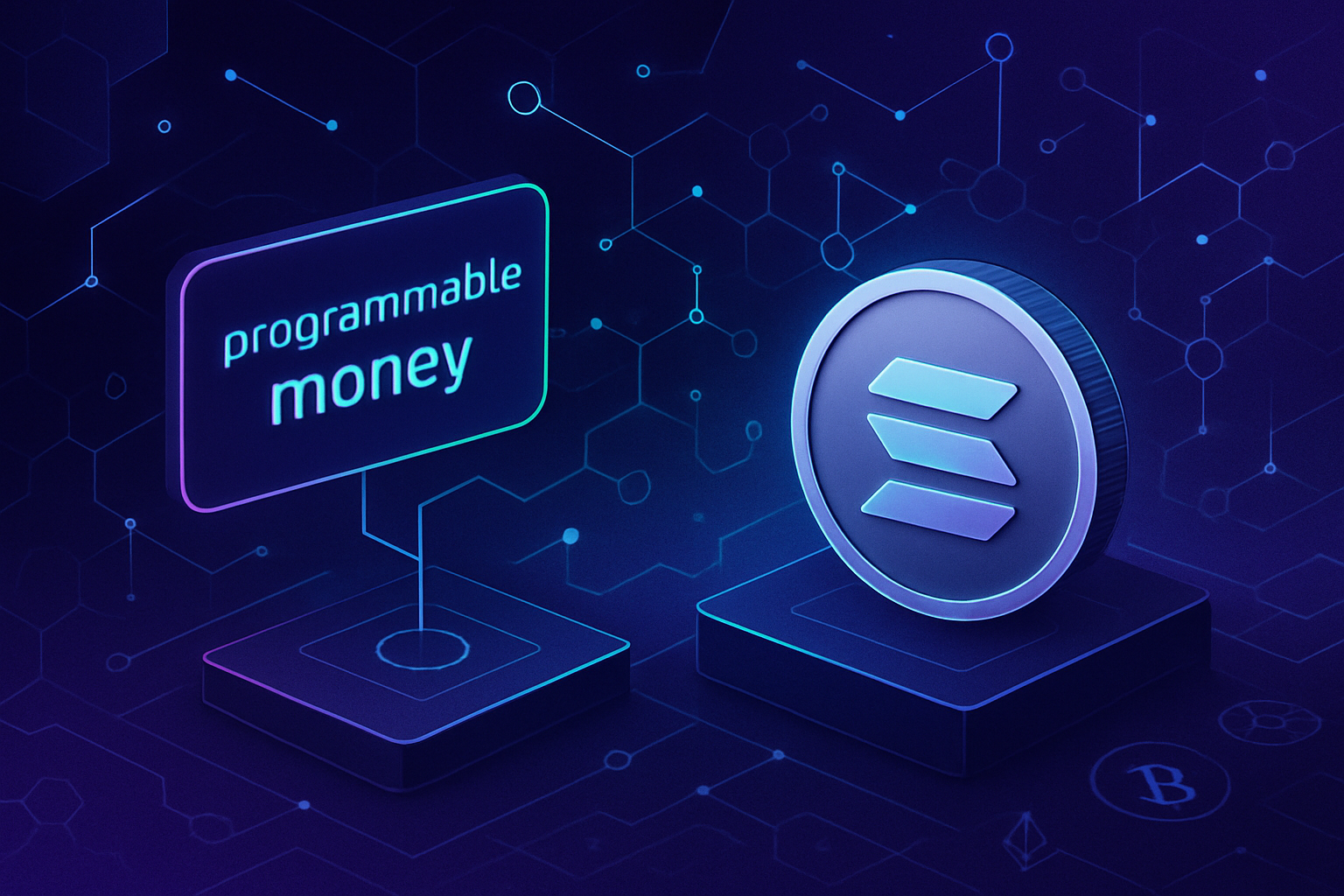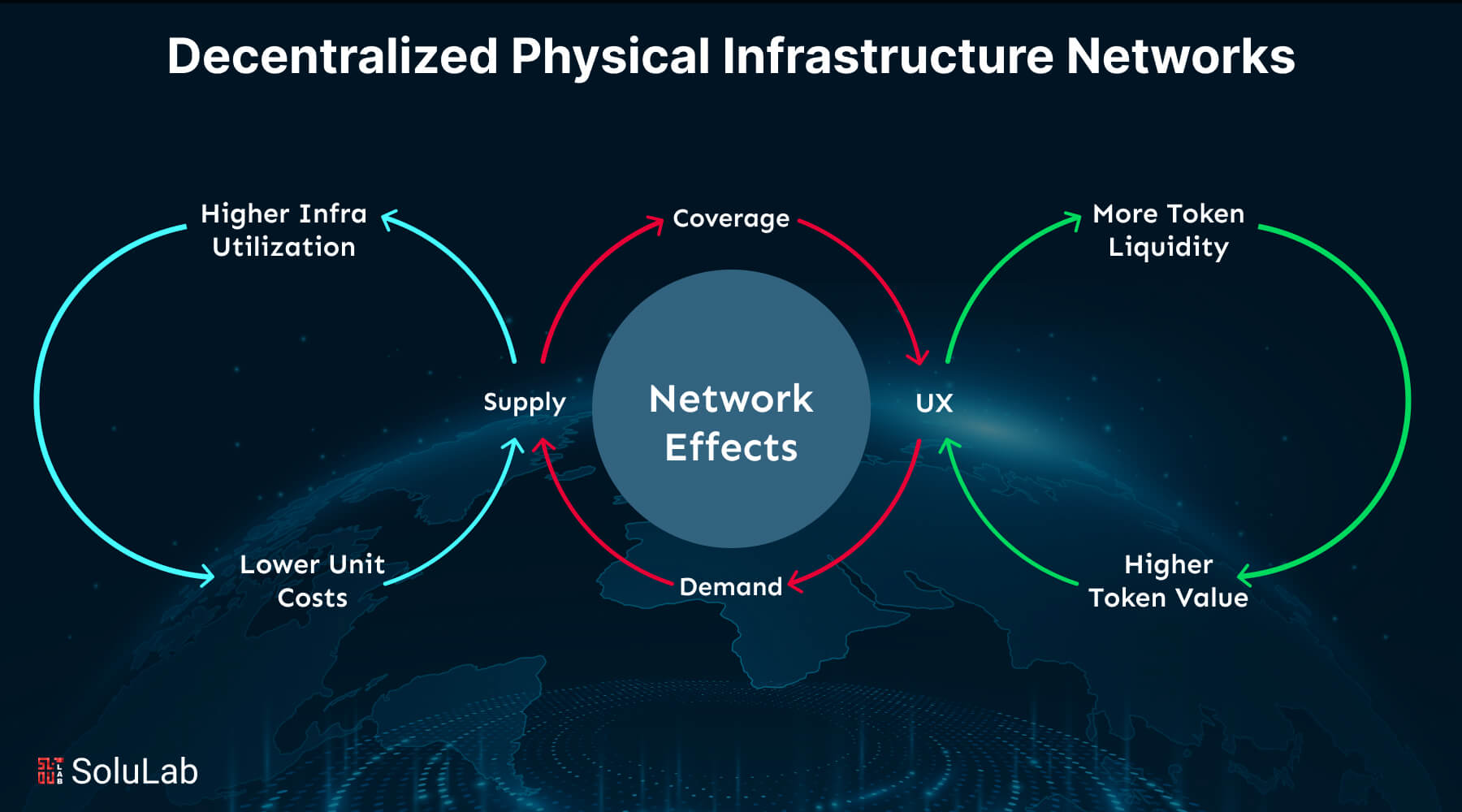
Decentralized Physical Infrastructure Networks (DePIN) have rapidly evolved from an experimental concept to a multibillion-dollar force in Web3, and Solana is at the heart of this transformation. With the Solana blockchain now hosting over 78 DePIN projects across wireless, cloud, mapping, and compute sectors, the stage is set for a new era of affordable, censorship-resistant, and composable infrastructure. But what makes Solana uniquely suited for powering these decentralized networks? Let’s dive into the technical backbone that’s driving DePIN’s explosive growth on Solana.
Why DePIN Projects Are Choosing Solana: The Technical Edge
Major DePIN initiatives like Helium, Render Network, and Hivemapper have all migrated to Solana in recent years. This isn’t just a trend – it’s a strategic shift. The primary reason? Solana’s unmatched throughput and cost efficiency. At the time of writing, Solana (SOL) is trading at $193.59, reflecting its strong position in the blockchain infrastructure market.
Solana’s architecture is purpose-built for high-frequency, low-latency microtransactions. The network can process up to 65,000 transactions per second (TPS) with an average fee of just $0.00025 per transaction. For DePIN use cases that require millions of on-chain data points and rewards – think IoT sensors, GPU compute tasks, or map contributions – these economics are a game changer.
Let’s break down why this matters:
- Micro-rewards at scale: DePIN projects need to incentivize thousands (or millions) of contributors. Solana’s low fees make it possible to reward every small action without burning through the project’s treasury.
- Real-time data validation: Many DePINs rely on constant data checks (e. g. , confirming network uptime or mapping accuracy). Solana’s speed keeps these checks cheap and near-instant.
- Composability: Solana’s developer tools (like Anchor and SPL tokens) allow DePIN builders to quickly spin up new token economies, staking mechanisms, and NFT-based proof systems.
This technical advantage has led to what some are calling a “DePIN migration wave. ” As one industry observer put it:
Solana’s Core Technologies: The Foundation of DePIN
To understand how Solana powers decentralized infrastructure, it’s worth zooming in on a few key innovations:
- Proof of History (PoH): Solana’s unique consensus mechanism timestamps every transaction, enabling parallel processing and reducing network congestion. For DePINs, this means the network can handle massive volumes of device-generated data without bottlenecks.
- Gulf Stream: This protocol pushes transaction caching and forwarding to the edge of the network, minimizing confirmation times. In practice, DePIN operators see near-instant settlement of rewards or data submissions.
- Sealevel Runtime: Solana’s parallel smart contract execution is a boon for projects running complex incentive logic or validation checks simultaneously across thousands of nodes.
These technologies aren’t just theoretical – they’re already being leveraged by top Solana DePIN projects. For example, Helium’s migration to Solana enabled the wireless network to manage nearly 1 million hotspots across 192 countries, all while distributing rewards and validating coverage on-chain. Render Network taps Solana’s throughput to orchestrate GPU rendering tasks worldwide at a fraction of traditional costs.
Market Data: Solana DePIN By the Numbers
The numbers speak for themselves: as of March 2025, Solana DePIN projects collectively represent over $25 billion in market value. The ecosystem’s diversity is staggering – from decentralized mapping (Hivemapper) to cloud compute (Render) and wireless connectivity (Helium).
Key Solana DePIN Projects: Sector, User Base, and Technical Highlights (as of March 2025)
| Project Name | Sector | User Base / Scale | Technical Highlights |
|---|---|---|---|
| Helium | Wireless Communication (IoT & 5G) | ~1 million hotspots in 192 countries | Decentralized wireless network; migrated to Solana for high throughput and low fees; leverages micro-rewards and data validation via Solana’s 65,000 TPS capacity |
| Render Network | Decentralized GPU Computing | Global network of GPU providers and users | Utilizes idle GPU power for rendering; benefits from Solana’s low transaction costs (~$0.00025) for micro-payments; scalable thanks to Solana’s high throughput |
| Hivemapper | Crowdsourced Mapping / Geolocation | Community-driven, global coverage | Street-level imagery captured by users; decentralized map building; uses Solana’s compressed NFTs (cNFTs) and fast settlement for reward distribution |
With SOL currently priced at $193.59, the market is clearly recognizing Solana’s role as the infrastructure layer for Web3’s physical world applications.
Solana (SOL) Price Prediction Table: 2026-2031 (DePIN Growth Scenario)
Based on DePIN ecosystem expansion, Solana’s technical advancements, and current market trends. All prices in USD.
| Year | Minimum Price (Bearish) | Average Price (Base Case) | Maximum Price (Bullish) | Annual % Change (Avg) | Key Market Scenario |
|---|---|---|---|---|---|
| 2026 | $160.00 | $215.00 | $320.00 | +11% | DePIN adoption accelerates, new infrastructure projects onboard |
| 2027 | $185.00 | $260.00 | $400.00 | +21% | Solana cements DePIN leadership, regulatory clarity grows |
| 2028 | $210.00 | $310.00 | $510.00 | +19% | Mainstream enterprises join DePIN, technical upgrades |
| 2029 | $190.00 | $345.00 | $600.00 | +11% | Market correction, consolidation, DePIN use cases mature |
| 2030 | $230.00 | $410.00 | $710.00 | +19% | Global DePIN integration, cross-chain interoperability |
| 2031 | $260.00 | $470.00 | $850.00 | +15% | DePIN market matures, Solana faces new competition |
Price Prediction Summary
Solana’s price outlook from 2026 to 2031 shows steady growth potential, anchored in its dominance of the DePIN sector. While volatility and market corrections are expected, the ongoing expansion of real-world infrastructure use cases and strong developer momentum suggest a favorable trajectory. Bullish scenarios depend on continued DePIN migration, regulatory clarity, and sustained innovation, while bearish risks include market corrections and competitive pressures.
Key Factors Affecting Solana Price
- Rapid growth of DePIN projects migrating to Solana, expanding real-world utility
- Solana’s high throughput and cost efficiency, supporting microtransactions and data validation at scale
- Regulatory developments in the US, EU, and Asia affecting DePIN and crypto adoption
- Integration with oracles and real-world data sources (e.g., Pyth Network)
- Mainstream enterprise participation and partnerships in DePIN ecosystems
- Competition from other high-performance blockchains (e.g., Ethereum, Avalanche, Sui)
- Potential network upgrades and scalability improvements on Solana
- Macro market cycles, including risk-off sentiment and global economic trends
Disclaimer: Cryptocurrency price predictions are speculative and based on current market analysis.
Actual prices may vary significantly due to market volatility, regulatory changes, and other factors.
Always do your own research before making investment decisions.
Developer Ecosystem and Real-World Integrations
Solana isn’t just fast and cheap – it’s also developer-friendly. The ecosystem offers robust tooling like the Anchor framework (for building secure smart contracts), SPL token standards (for custom tokens and NFTs), and compressed NFTs (cNFTs) that make it feasible to issue millions of proofs-of-participation without clogging the chain or blowing up costs.
Integration with oracles such as Pyth Network and Switchboard further empowers DePIN builders to reliably bridge real-world data into their protocols – a must-have for any infrastructure project connecting blockchain incentives to physical actions.
If you’re curious about how these tools are being used in practice, check out our deep dive on Solana-powered DePIN projects transforming real-world infrastructure.
Solana’s DePIN momentum isn’t just about technical specs or market cap – it’s about the real-world impact and the new business models these networks enable. By lowering the barriers to participation, Solana DePIN projects are unlocking opportunities for individuals and small businesses globally to contribute to, and profit from, critical infrastructure.
Democratizing Infrastructure: How Solana DePIN Empowers Users
What sets Solana DePIN apart is its ability to democratize access to infrastructure. Anyone can deploy a wireless hotspot, run a GPU node, or collect mapping data and be rewarded in real time. The combination of microtransactions (enabled by Solana’s $0.00025 average fee) and composable crypto incentives means that contributors, from hobbyists to enterprises, play an active role in network growth and governance.
- Permissionless Participation: No gatekeepers. Anyone with hardware and an internet connection can join.
- Transparent Rewards: On-chain incentives are verifiable and distributed instantly, thanks to Solana’s high throughput.
- Global Reach: Projects like Helium and Hivemapper have proven that decentralized models can scale across continents, not just cities.
This new paradigm has significant implications for everything from urban connectivity and cloud computing to supply chain transparency and environmental monitoring. As more sectors wake up to the potential of DePIN, expect Solana’s role as the go-to blockchain infrastructure layer to deepen even further.

Challenges and What’s Next: Scaling Solana DePIN in 2025
No technology is without its hurdles. As Solana’s DePIN ecosystem matures, key challenges include ensuring long-term network security, maintaining decentralization as user bases grow, and navigating evolving regulatory landscapes. The good news? The Solana developer community is tackling these head-on through open-source governance, rapid tooling improvements, and robust cross-chain integrations.
Looking ahead, innovations like confidential computing, decentralized identity, and advanced staking models are already on the roadmap for leading Solana DePIN projects. These will further lower costs, boost privacy, and expand the universe of possible use cases. For a closer look at best practices and strategic insights for builders, see our Solana DePIN playbook.
With SOL holding strong at $193.59, the market continues to signal confidence in Solana’s ability to anchor the next generation of decentralized infrastructure. If you’re considering building or investing in this space, now is the time to explore how Solana’s technical foundation can power your vision.
Want more hands-on guidance? Check out our technical guide for developers or dive into the top-performing projects shaping the Solana DePIN ecosystem.






